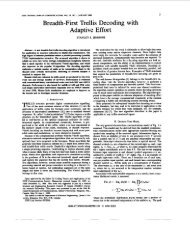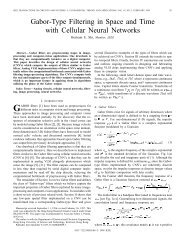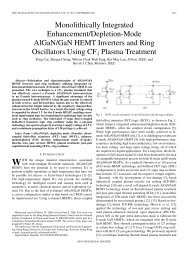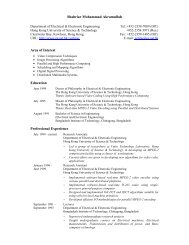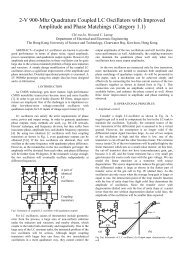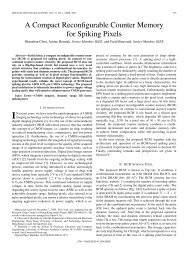Thesis - Department of Electronic & Computer Engineering
Thesis - Department of Electronic & Computer Engineering
Thesis - Department of Electronic & Computer Engineering
Create successful ePaper yourself
Turn your PDF publications into a flip-book with our unique Google optimized e-Paper software.
7. Appendix7.1 Pro<strong>of</strong> for Properties <strong>of</strong> the Continuous WTAModelFor a class <strong>of</strong> network, connected in the same way as Maxnet, with excitatory selffeedbackand inhibitory lateral connections, the dynamics can be described as:∑τv˙ i()t = – vi () t + I i + af i () t – b f j () t ,i≠jwhere f i() t = max( v i()0 t , ), for all i = 12… , , N and ab , > 0 .Assume that the inputs can be arranged in a strictly descending order, i.e.,I π1> I π2> … > I πN , for a suitable index set { π 1, π 2…π , N}, and recurrent strengthsab , are chosen such that the network exhibits WTA behavior, that is, 0 < a < 1and( 1 – a)I( 1 – a) ( 1 – δ 1) < b < ---------------- , where δ π1– I π2.1 – δ 1= --------------------1I π1Lemma 1: ∀ε > 0,∀i= 1 , …,N,∃T i < ∞,∀t > T i , f i () t < ----------- + ε .1 – aI iPro<strong>of</strong>: For each neuron in the network, its dynamics obeyτv˙ i()t = – vi () t + I i + af i () t – b f j () t ≤ – v i () t + I i + af i () t .∑i≠jFor the right hand side <strong>of</strong> the inequality, we obtain that68



